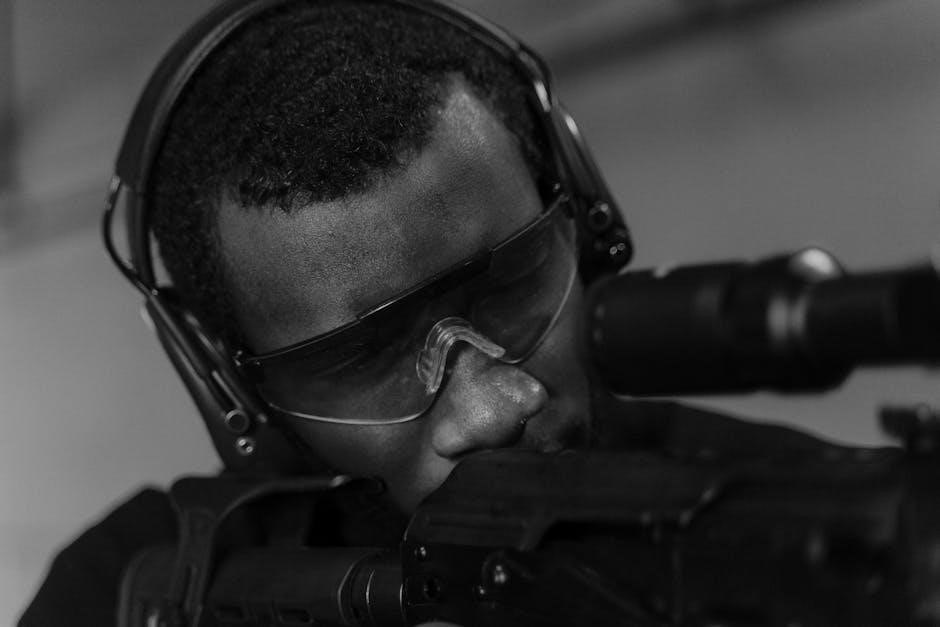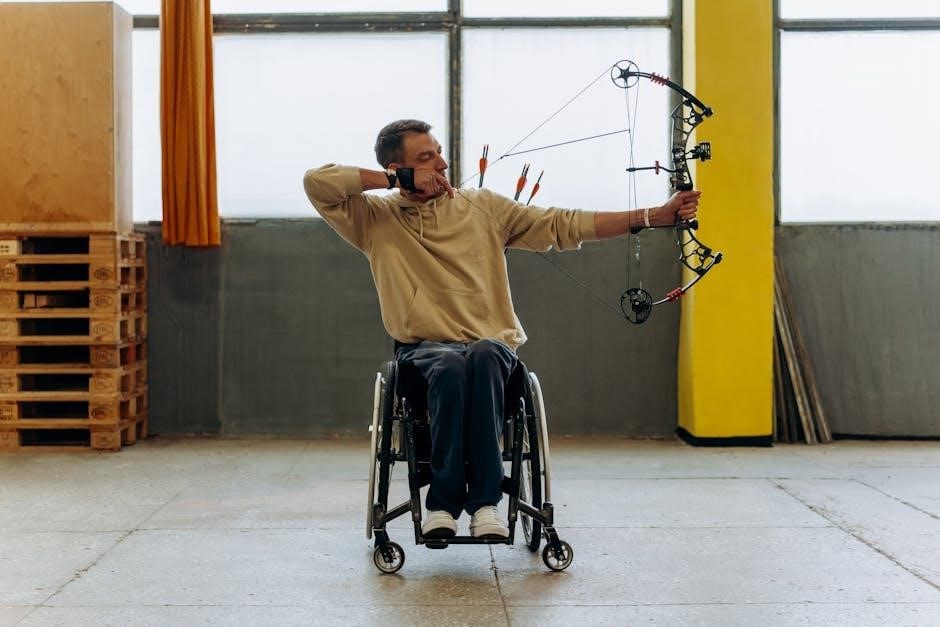Honda LaneWatch Aiming Target: A Comprehensive Guide
This guide provides a complete overview of the Honda LaneWatch aiming target. It explains its purpose, and where to find the correct PDF. This guide also includes information about printing, dimensions, material, setup, calibration procedures, and troubleshooting. This guide offers valuable insights for DIY enthusiasts and professionals.
Overview of Honda LaneWatch System
The Honda LaneWatch system is a safety feature designed to enhance driver awareness; This is done by displaying a live video feed of the passenger-side blind spot on the vehicle’s infotainment screen. This video feed activates when the driver signals a right turn or presses a button on the turn signal stalk. The system helps drivers identify vehicles, pedestrians, and other objects in the blind spot. It also helps prevent accidents during lane changes and turns.
Unlike traditional blind-spot monitoring systems that use sensors, LaneWatch utilizes a camera mounted on the passenger-side mirror. The camera provides a wider field of view compared to conventional mirrors. The image displayed on the screen includes dynamic guidelines to help the driver judge distances. The system is designed to complement, not replace, safe driving practices. Drivers should always check their mirrors and surroundings before changing lanes.
Proper calibration of the LaneWatch camera is essential for accurate image display. Calibration ensures that the camera is correctly aligned; The camera’s alignment is necessary for the guidelines and distance markers to be accurate. This is important for the system to function effectively.
Understanding the Aiming Target Purpose
The Honda LaneWatch aiming target is a crucial component in calibrating the LaneWatch camera system. The aiming target is a specifically designed pattern. Technicians can use this target to accurately align the camera after mirror replacement or system adjustments. The target ensures that the camera captures the correct field of view and displays the image accurately on the infotainment screen. Without the target, calibrating the LaneWatch system can be challenging. The image can also be inaccurate.
The primary purpose of the aiming target is to provide a reference point for the camera. During the calibration process, the camera is adjusted. The camera is adjusted to ensure that it aligns with the target’s markings. This process ensures that the displayed image corresponds precisely with the actual surroundings. Accurate alignment is essential for the LaneWatch system to function effectively.
Using the aiming target ensures that the dynamic guidelines displayed on the screen are properly aligned. Properly aligned guidelines help the driver to judge distances accurately; This helps prevent accidents. The target helps to minimize distortion in the camera’s image. The target is a critical element in maintaining the reliability and safety of the LaneWatch system.
Identifying the Correct Aiming Target PDF
Finding the correct aiming target PDF is essential. It ensures accurate LaneWatch system calibration. Different Honda models and years may require specific targets. Using the wrong target will result in an inaccurate calibration. This could compromise the effectiveness of the LaneWatch system.
Start by consulting your Honda’s service manual. The service manual provides detailed information about the required aiming target for your specific vehicle. The service manual also has the part number for the aiming target. Online Honda forums and communities can also be valuable resources. Experienced owners often share information about specific targets.
When searching online, ensure the source is reliable and reputable. Look for PDFs hosted on official Honda websites or trusted automotive repair sites. Verify that the PDF file name and description match your vehicle’s model and year. Some PDFs may include version numbers or revision dates. This information will help you confirm its compatibility.
Pay close attention to the target’s dimensions and markings. Compare the downloaded PDF with images or diagrams found in the service manual. Ensure all lines, patterns, and reference points are clear and accurately represented. A low-resolution or distorted PDF can lead to calibration errors. Taking the time to verify the PDF’s authenticity and accuracy is crucial. This will ensure a successful LaneWatch system calibration.

Downloading and Printing the Aiming Target PDF
After identifying the correct PDF, the next step is downloading and printing. Ensure you have a stable internet connection for a seamless download. Save the PDF to a secure location on your computer. This ensures easy access and prevents accidental deletion. Before printing, review the PDF in a suitable viewer. Confirm all elements are clear and properly formatted.
For optimal results, use a high-quality printer capable of producing accurate lines and details. Select the correct paper size. The paper size is usually specified in the PDF instructions or service manual. Using the wrong paper size will distort the target. This renders it useless for calibration. When printing, disable any scaling or resizing options in the printer settings. This ensures the target prints at its intended dimensions.
Consider using a professional printing service for large-format targets. Services like Staples can print full-sized images in black and white. This is a cost-effective solution for targets that exceed standard printer capabilities. After printing, carefully inspect the target for any imperfections. These imperfections include smudges, streaks, or distortions. Any imperfections will compromise calibration accuracy. Store the printed target flat. Doing this prevents creases or folds. These folds can also affect calibration. Proper handling is essential for accurate LaneWatch calibration.
Target Dimensions and Material Specifications
Accurate dimensions are critical for the LaneWatch aiming target. These ensure proper calibration of the Honda LaneWatch system. The target’s dimensions are usually specified in the official Honda service manual. The dimensions are available in the PDF document. The dimensions are often expressed in millimeters or inches. Ensure that you adhere strictly to these measurements when printing or creating a target. Deviations, even minor ones, can lead to inaccurate calibration. The inaccurate calibration will compromise the effectiveness of the LaneWatch system.
Material specifications are equally important. The target should be printed on a material that provides a stable and flat surface. Heavyweight paper or cardstock is often recommended. These materials will help prevent warping or bending. Avoid using glossy paper. Glossy paper can cause glare. The glare will interfere with the camera’s ability to accurately detect the target. The target’s color and contrast are also crucial. The target typically features a specific pattern. This pattern consists of high-contrast lines or shapes. These shapes allow the camera to precisely determine its orientation.
Verify the printed target matches the specifications outlined in the service manual. Use a ruler or measuring tape to confirm the dimensions. Check the material for flatness and absence of glare. Adhering to these specifications ensures the target is suitable for accurate LaneWatch calibration.
Setting Up the Aiming Target for Calibration
Proper setup of the aiming target is essential for accurate LaneWatch calibration. First, select a suitable location. Choose a flat, level surface that provides ample space around the vehicle. A garage or a large parking area is ideal. Ensure the area is well-lit. Adequate lighting is important for the camera to clearly detect the target.
Position the vehicle according to the specifications in the service manual. The vehicle must be a specific distance from the target. The vehicle must be aligned correctly. Use measuring tape to ensure accuracy. Secure the printed target to a stable stand or surface. The target must be perpendicular to the ground. The target must be at the specified height. Double-check the target’s placement. The target must be parallel to the vehicle.
Use a level to verify the target’s vertical alignment. Precise positioning is critical. Even slight misalignments can result in calibration errors. Clear any obstructions between the camera and the target. Obstructions will impede the camera’s view. Consult the Honda service manual for specific measurements and placement instructions. These will vary depending on the vehicle model. Taking the time to set up the target correctly is the key. This set up will ensure a successful and accurate LaneWatch calibration.

Accessing the LaneWatch Calibration Menu
Accessing the LaneWatch calibration menu requires a specific sequence of steps. These steps differ depending on the Honda model and year. Consulting the vehicle’s service manual is essential. It provides accurate instructions. Typically, the process involves entering a diagnostic mode. This diagnostic mode is accessed through the infotainment system.
One common method involves pressing a combination of buttons simultaneously. This combination may include the power button, menu button, and back button. Another method uses the radio preset buttons. Pressing the radio preset 1 and 6 buttons, along with the power button, might work. Simultaneously pressing the Audio, Menu, and Back buttons for several seconds can also work.
Once in the diagnostic menu, look for an option labeled “Function Setup”. Then, select “LaneWatch”. Finally, choose the “Aiming” or “Calibration” option. Some models require pressing the “Menu” button twice after entering the diagnostic mode. This will lead to the rear camera display. Then pressing preset 4 twice will enter the Lanewatch menu. Internet forums and online videos can offer additional guidance. Remember to follow the instructions closely. Incorrect button presses can lead to unintended consequences. Patience and precision are key to successfully accessing the calibration menu.
Step-by-Step Calibration Procedure using the Target
The calibration procedure using the aiming target involves a series of precise steps. First, position the vehicle on a level surface. Ensure adequate lighting. Next, place the printed aiming target at the specified distance and height. These measurements are usually found in the service manual. Access the LaneWatch calibration menu as described earlier. Select the “Aiming” or “Calibration” option. The system will display a live view from the LaneWatch camera.
Adjust the camera’s alignment. Use the on-screen guides to align the target image within the specified parameters. This may involve adjusting the target’s position. It also may involve using the calibration menu to adjust the camera’s parameters. The goal is to have the target’s markings align perfectly with the on-screen indicators. Some systems require pressing the LaneWatch button on the turn signal stalk to initiate the process. Follow any on-screen prompts and instructions carefully. After aligning the target, the system might prompt you to save the calibration settings.
Verify the calibration by test driving the vehicle. Check if the LaneWatch system activates correctly. The red line should indicate the correct distance. If the image appears distorted, repeat the calibration process. Small adjustments to the target’s position can make a significant difference. If the problem persists, consider seeking professional assistance.
DIY Calibration vs. Professional Service
Deciding between DIY calibration and professional service for the Honda LaneWatch system involves weighing several factors. DIY calibration offers cost savings. It also allows for flexibility in scheduling. However, it requires a certain level of technical skill and attention to detail. Accessing the diagnostic menus is necessary. The accurate placement of the aiming target is also necessary. If the steps are not carefully followed, the calibration will fail.
Professional service, on the other hand, provides expertise and specialized equipment. Technicians have experience in performing calibrations. They will ensure accuracy and reliability. Dealerships and certified repair shops offer this service. They use advanced tools for precise adjustments. This ensures proper LaneWatch functionality. This option comes at a higher cost. It also involves scheduling an appointment and leaving the vehicle.
The choice depends on your comfort level, available resources, and the complexity of the issue. If you are comfortable with basic automotive procedures and have the necessary tools, DIY calibration can be a viable option. However, if you lack experience or encounter difficulties, seeking professional service is advisable. This will guarantee the LaneWatch system operates safely and effectively.

Troubleshooting Common Calibration Issues
When calibrating the Honda LaneWatch system, several issues can arise, hindering the process. One common problem is inaccurate target placement. This leads to incorrect camera angles. Ensure precise measurements and positioning according to the manual. Another issue is lighting conditions. Inconsistent or insufficient lighting can affect camera performance. Conduct calibration in a well-lit area with minimal shadows.
Software glitches or connectivity problems can also disrupt the calibration process. Verify that the vehicle’s software is up-to-date and that all connections are secure. If errors persist, try restarting the system or consulting a diagnostic tool. Furthermore, physical obstructions, such as dirt or debris on the camera lens, can impede calibration. Clean the lens carefully before proceeding.
Incorrect diagnostic menu navigation can lead to improper settings. Double-check the steps in the service manual to ensure accurate menu selection. Finally, hardware malfunctions may prevent successful calibration. If the camera or related components are faulty, professional repair or replacement may be necessary. By addressing these potential issues, you can improve the chances of a successful LaneWatch calibration.
Verifying Proper LaneWatch Functionality After Calibration
After calibrating the Honda LaneWatch system, it’s essential to verify its proper functionality to ensure accurate blind spot monitoring. Begin by testing the system in various driving conditions, including city streets and highways. Observe the camera’s display when activating the turn signal. Confirm that the image appears promptly and clearly on the screen.
Check the accuracy of the displayed view by comparing it to your actual surroundings. The system should provide a wide-angle perspective of the adjacent lane, revealing vehicles or obstacles in your blind spot. Pay attention to the distance and positioning of objects on the screen. Verify that they correspond to their real-world locations.
Also, assess the system’s performance in different lighting conditions, such as daytime, nighttime, and during inclement weather. Ensure the camera maintains a clear image and accurate detection regardless of external factors. If any discrepancies or issues arise, revisit the calibration process. If problems persist, consult a qualified technician for further diagnosis and repair. Thorough verification guarantees the LaneWatch system is functioning correctly. This will provide reliable blind spot assistance.

Alternative Methods for Calibration (Phone/Image Based)
While the standard aiming target PDF is the recommended method for calibrating the Honda LaneWatch system, alternative approaches exist. These methods may prove useful in situations where printing a full-sized target is impractical. One popular alternative involves utilizing a smartphone or tablet to display the target image. Instead of printing the PDF, the image is loaded onto a device and held in the correct position relative to the vehicle.
This requires careful attention to distance and alignment, as even slight variations can affect calibration accuracy. Some users have reported success with this method, particularly when performed in low-light conditions to minimize screen glare. Another approach involves using a high-resolution image of the target displayed on a computer monitor.
The monitor is positioned at a specified distance from the vehicle. The aiming process proceeds as usual. However, it’s crucial to ensure the image is displayed at the correct size. The monitor is also steady to prevent distortion. These alternative methods may offer convenience, but meticulous execution is key to achieving satisfactory calibration results. Always prioritize accuracy to maintain the LaneWatch system’s effectiveness.
Safety Precautions During Calibration
Calibrating the Honda LaneWatch system, even with an aiming target PDF, requires attention to safety. Prioritize a safe environment to prevent accidents or injuries during the process. Start by ensuring the vehicle is parked on a level surface. Engage the parking brake firmly to prevent any unintended movement. Choose a location away from traffic and pedestrians to minimize distractions and potential hazards.
When working around the vehicle, be mindful of your surroundings and avoid wearing loose clothing or jewelry that could get caught. If the calibration procedure involves accessing the vehicle’s diagnostic menu, do so with the engine off. This is to prevent accidental activation of other systems.
When using a printed target, ensure it is securely mounted. This will prevent it from falling or shifting during the aiming process. If using a digital display, be aware of potential glare or reflections that could impair visibility. Most importantly, never compromise safety for convenience. If you are uncomfortable with any aspect of the calibration process, seek assistance from a qualified technician. Following these precautions will help ensure a safe and successful calibration experience.
